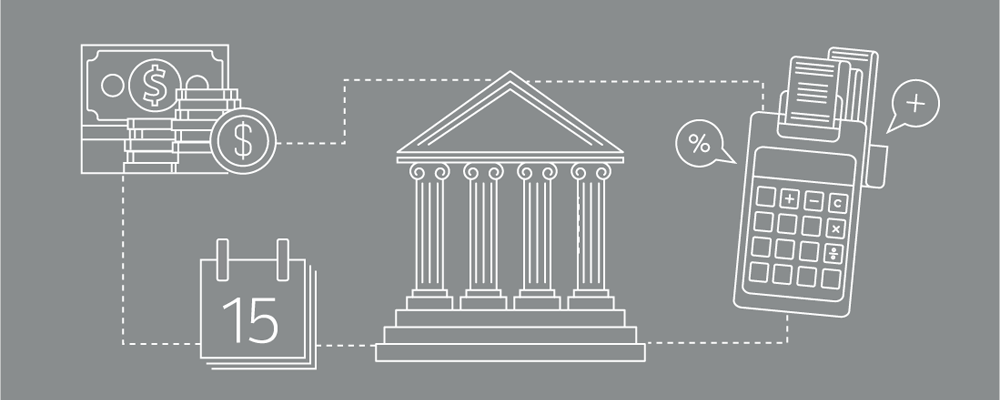Source: RSM US LLP.
TAX ALERT
On Aug. 12, 2021, the IRS released Rev. Proc. 2021-34 containing the much-awaited procedural guidance allowing taxpayers to automatically change their methods of accounting to follow the final revenue recognition regulations. The revenue procedure also contains several accounting method changes that allow taxpayers to change various inventory methods as a result of inadvertent determinations of appropriate cost offsets under section 451(b) or its proposed regulations. This revenue procedure is effective for Form 3115 filed on or after Aug. 12, 2021.
Background
On Dec. 21, 2020, the IRS and Treasury issued final regulations addressing the amendments made by the Tax Cuts and Jobs Act (TCJA) for revenue recognition under sections 451(b) and 451(c). Sections 451(b) and 451(c) altered the old standards of revenue recognition, requiring revenue to be taxable in the period no later than the year it is recognized on the company’s applicable financial statements (AFS) (AFS Income Inclusion Rule) and codifying the long-standing deferral method for advance payments. Section 451 also introduced the optional cost offset method that allows taxpayers to offset (i.e., reduce) the AFS income inclusion amount by the cost of goods in progress. These rules were effective for taxable years beginning after Dec. 31, 2017.
While the final regulations generally apply for taxable years beginning on or after Jan. 1, 2021, taxpayers can opt to apply the final regulations, in their entirety and in a consistent manner, to taxable years beginning before Dec. 30, 2020, or continue to rely on the proposed regulations for taxable years beginning after Dec. 31, 2017, and before Dec. 30, 2020.
In order to make the applicable changes under these new revenue recognition rules, taxpayers are required to follow procedures outlined in Rev. Proc. 2019-43 (or successor guidance). Rev. Proc. 2021-34 now modifies Rev. Proc. 2019-43 to provide procedures to change methods of accounting to comply with final regulations under section 451 and to change methods of accounting for certain inventory costs to comply with sections 263A, 461, and 471, if made in connection with a change to comply with section 451. Rev. Proc. 2021-34 also modifies Rev. Proc. 2015-13 to provide procedures for a taxpayer to change its method of accounting to comply with the applicable rules related to cost offset method changes.
Notable changes under the new guidance
- Adoption of the final 451 regulations: Rev. Proc. 2021-34 modifies sections 16.10 through 16.12 of Rev. Proc. 2019-43, altering these three automatic changes for the new section 451 rules. These changes are to be made on either a cutoff basis or with a section 481(a) adjustment, depending on the item being changed. Also, some of the changes must be combined on one Form 3115 (Application for Change in Accounting Method). The section 481(a) adjustment for method changes that involve inventory sales in these sections may be required to be netted. Specific netting rules are provided in the guidance.
Insight:
The procedures in this guidance contain significant interaction and multiple method changes under a single section, revising what may otherwise be normal method change procedures (e.g., netting related section 481(a) adjustments or matching the adjustment periods of related favorable adjustments and unfavorable adjustments, in certain instances). Taxpayers should expect an analysis of revenue related changes to take additional time and must be aware of the various changes provided.
- Advance payments treatment under Rev. Proc. 2004-34: Rev. Proc. 2019-43 is modified to reflect the inapplicability of Rev. Proc. 2004-34 for the treatment of advance payments, as Rev. Proc. 2004-34 is obsolete for taxable years beginning on or after Jan. 1, 2021. Going forward, taxpayers are required to treat advance payments using either the full inclusion or deferral method under Treas. Reg. section 1.451-8(b) or (c) for a taxpayer with an AFS, or Treas. Reg. section 1.451-8(b) or (d)(3) for a taxpayer without an AFS. All applicable method changes for advance payments should be filed following the applicable change under section 16.12 of Rev. Proc. 2019.43, as modified by Rev. Proc. 2021-34.
- Cost offset method changes: The revenue procedure modifies Rev. Proc. 2015-13 to provide procedures for taxpayers to obtain consent from the IRS to change their methods of accounting to comply with the final section 451 regulations by providing rules related to concurrent method changes that include cost-offset and cost-offset related inventory method changes. A new automatic change eligibility rule is added under section 5.01(1)(g) that requires certain taxpayers making a cost-offset related inventory method change to also make the corresponding cost offset change for the same year of change. Additionally, language is added in section 6.03(1)(b) for a concurrent automatic method change for certain taxpayers to make one or more cost-offset related inventory method changes and one or more corresponding cost offset changes on the same Form 3115.
- Inventory costs and UNICAP: Rev. Proc. 2021-34 modifies sections 12.01, 12.02, 22.05, 22.11 and 22.18 of Rev. Proc. 2019-43 to temporarily waive the eligibility rule in section 5.01(f) of Rev. Proc. 2015-13 for certain inventory changes made to comply with the final section 451 regulations. Newly added section 20.13 also provides a temporary automatic change for a taxpayer to change its method of accounting for the timing of incurring inventory costs to comply with the all events test under section 461 if certain conditions are met.
Insight:
Certain accounting method changes in this guidance provide waivers on the general restriction that an accounting method change cannot be filed for the same item within a five-year period. However, each waiver may have different terms and conditions that should be reviewed closely.
- Treatment of certain credit card fees: The IRS simultaneously issued Rev. Proc. 2021-35 that modified Rev. Proc. 2013-26 to reflect changes made to the treatment of certain credit card fees by section 451(b) and subsequently by Reg. sections 1.451-3 and 1.1275-2(l). Rev. Proc. 2013-26 allowed a taxpayer to use the proportional method of accounting for original issue discount (OID) on a pool of credit card receivables. Rev. Proc. 2021-35 modifies this to make clear that the proportional method no longer applies to an item that meets the definition of a specified fee, including a specified credit card fee.
Other updates in the guidance include modification to section 15.01 for taxpayers with an AFS changing their overall method of accounting from cash to accrual, and the removal of the automatic change in method of accounting for credit card late fees and credit card cash advance fees.
Final thoughts
This revenue procedure is effective for Forms 3115 filed on or after August 12, 2021, so taxpayers impacted by the new revenue recognition rules or wishing to early adopt the final regulations in 2020 can now start filing the relevant method changes utilizing this procedural guidance. It is to be noted, however, that early adoption must be made with originally filed returns and taxpayers are not allowed to file an accounting method change with an amended return. Given that the extended due date of 2020 calendar tax returns is fast approaching, taxpayers must consider the limited time to act as they determine whether early adoption makes sense and is beneficial for them. Additionally, taxpayers presently working through their accounting method changes should review the terms and conditions closely to ensure they are in compliance with the new guidance.
The procedural guidance did not further address the application of the cost offset method, but it did provide a potentially interesting comment regarding the definition of “item of gross income” with respect to sections 451(b) and (c), in apparent contrast to the more commonly used term of “item” elsewhere in section 446 and the regulations thereunder. This contrast will likely draw more questions from practitioners and taxpayers. Overall, the guidance for implementing the final section 451 regulations is fairly complex and taxpayers and practitioners should practice caution as they work on filing the appropriate method changes in the coming months.
This article was written by Christian Wood, Peter Pentland, Ryan Corcoran , Rida Abbasi and originally appeared on 2021-08-17.
2021 RSM US LLP. All rights reserved.
https://rsmus.com/what-we-do/services/tax/federal-tax/tax-accounting-services/irs-issues-procedural-guidance-for-the-new-revenue-recognition-r.html
The information contained herein is general in nature and based on authorities that are subject to change. RSM US LLP guarantees neither the accuracy nor completeness of any information and is not responsible for any errors or omissions, or for results obtained by others as a result of reliance upon such information. RSM US LLP assumes no obligation to inform the reader of any changes in tax laws or other factors that could affect information contained herein. This publication does not, and is not intended to, provide legal, tax or accounting advice, and readers should consult their tax advisors concerning the application of tax laws to their particular situations. This analysis is not tax advice and is not intended or written to be used, and cannot be used, for purposes of avoiding tax penalties that may be imposed on any taxpayer.
RSM US Alliance provides its members with access to resources of RSM US LLP. RSM US Alliance member firms are separate and independent businesses and legal entities that are responsible for their own acts and omissions, and each are separate and independent from RSM US LLP. RSM US LLP is the U.S. member firm of RSM International, a global network of independent audit, tax, and consulting firms. Members of RSM US Alliance have access to RSM International resources through RSM US LLP but are not member firms of RSM International. Visit rsmus.com/aboutus for more information regarding RSM US LLP and RSM International. The RSM(tm) brandmark is used under license by RSM US LLP. RSM US Alliance products and services are proprietary to RSM US LLP.




